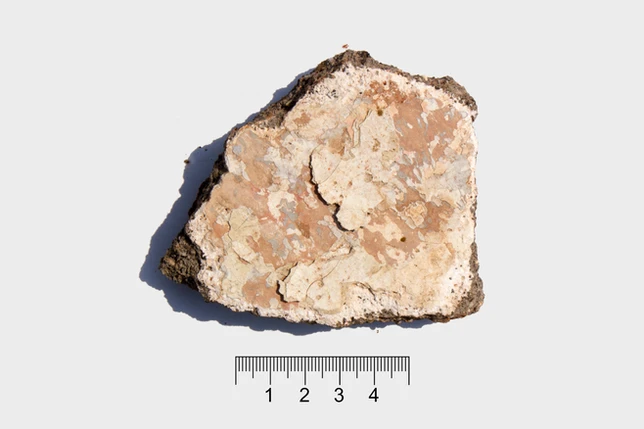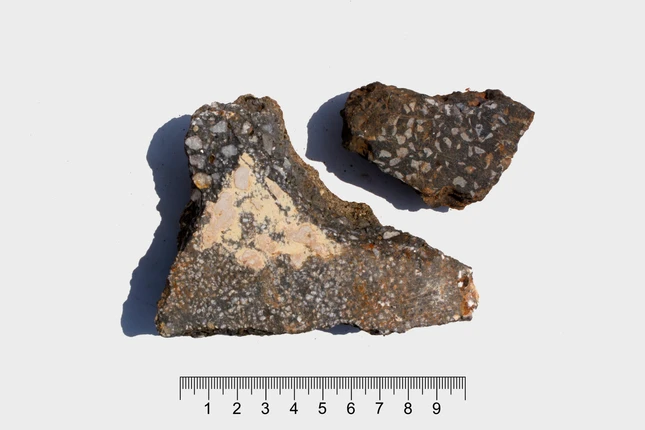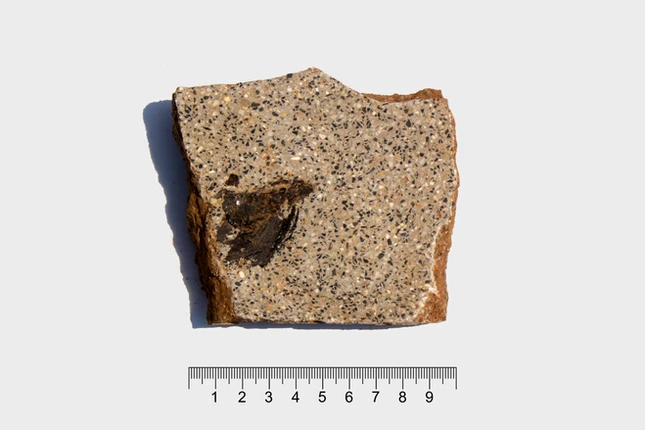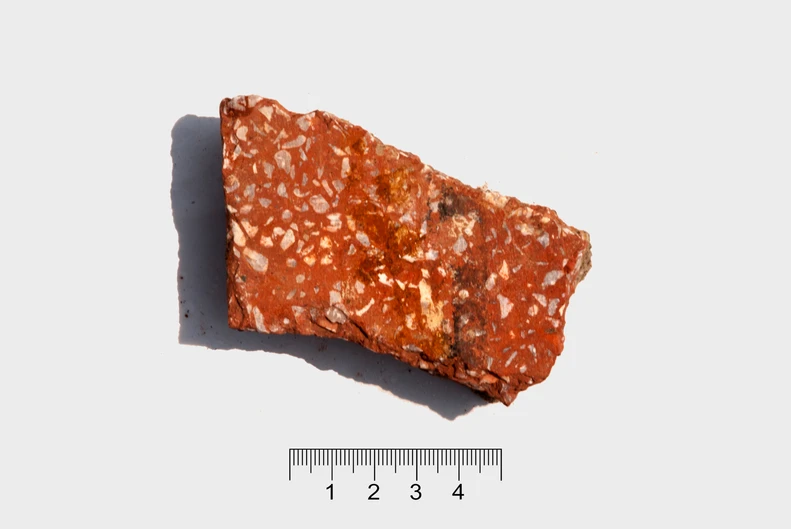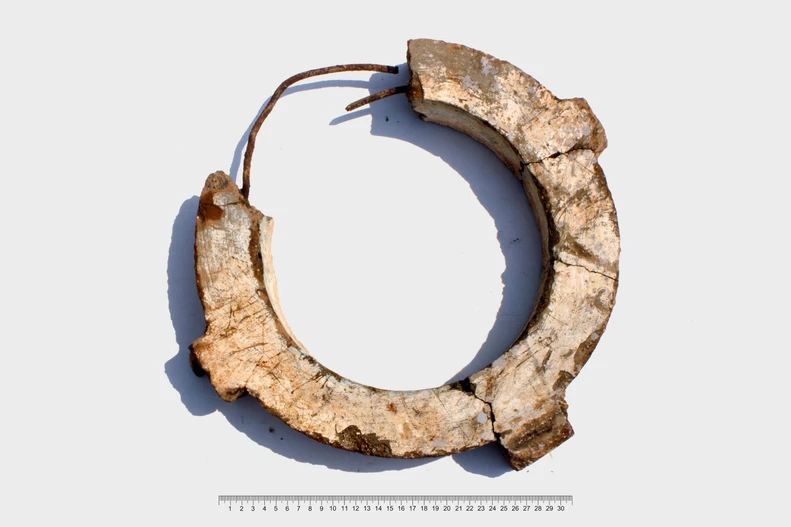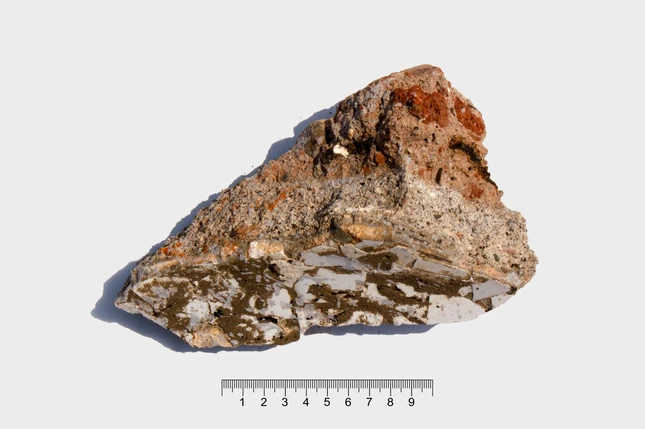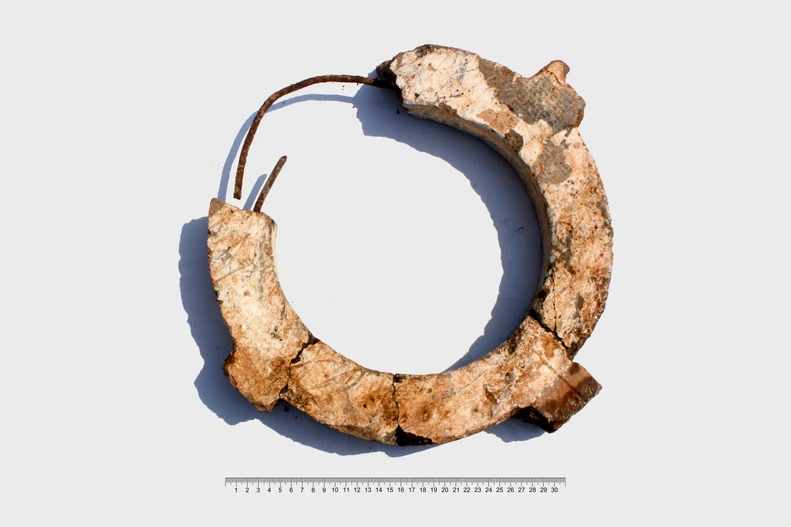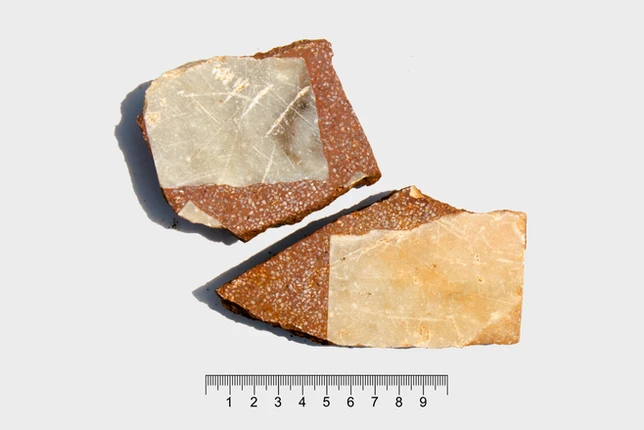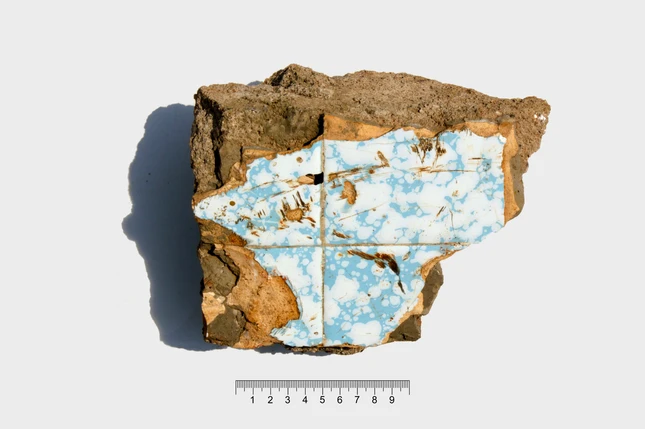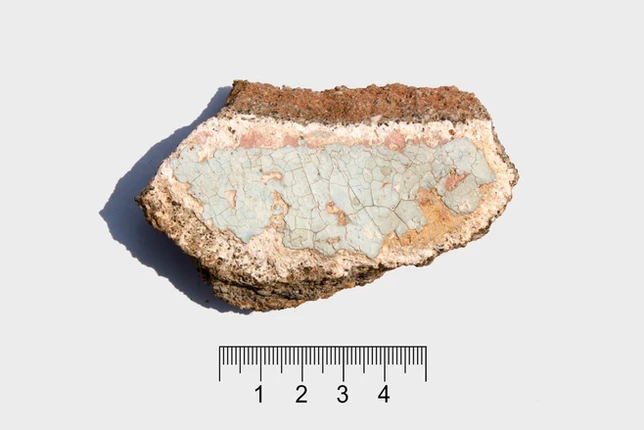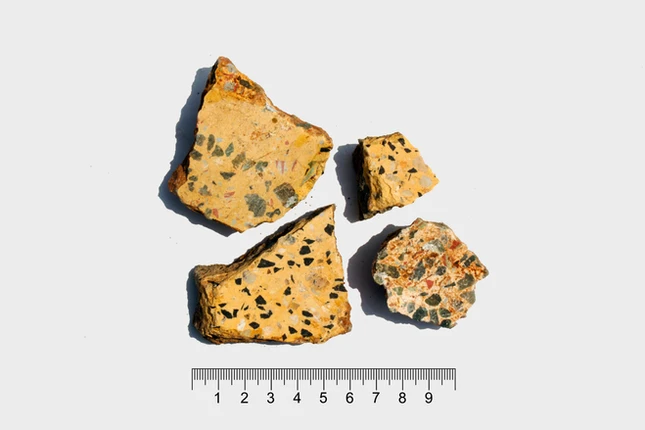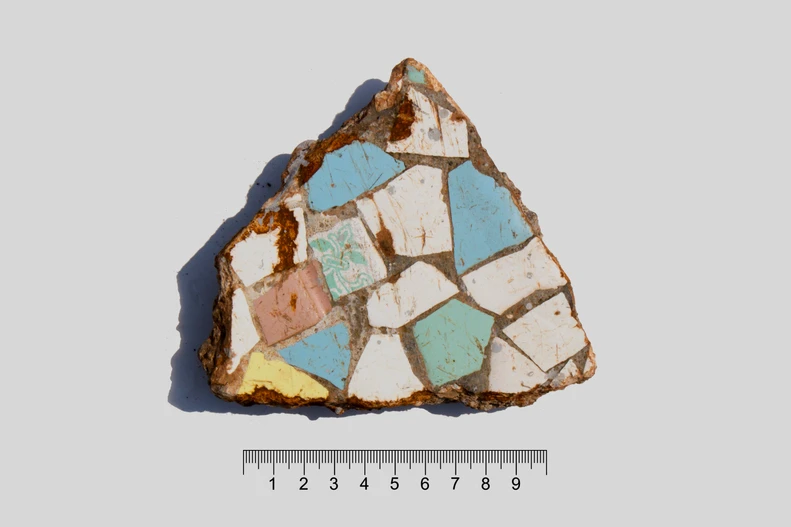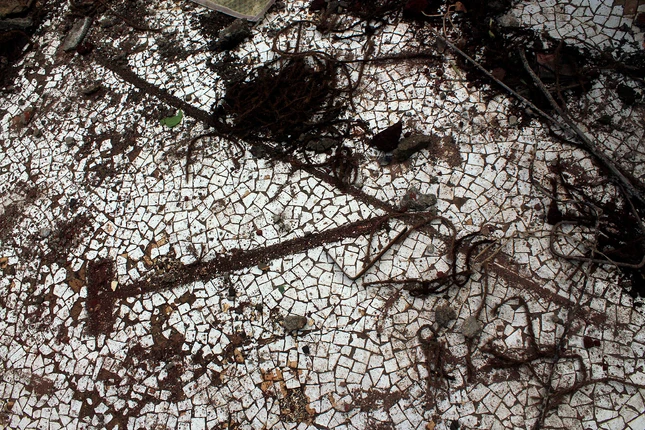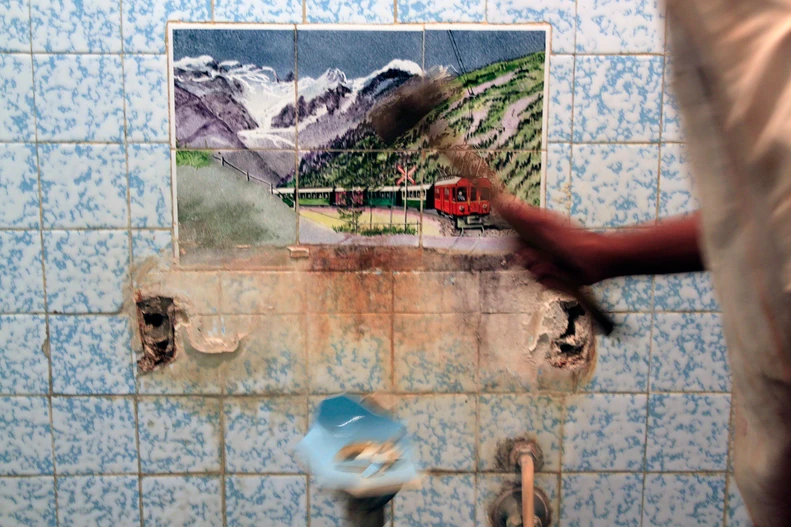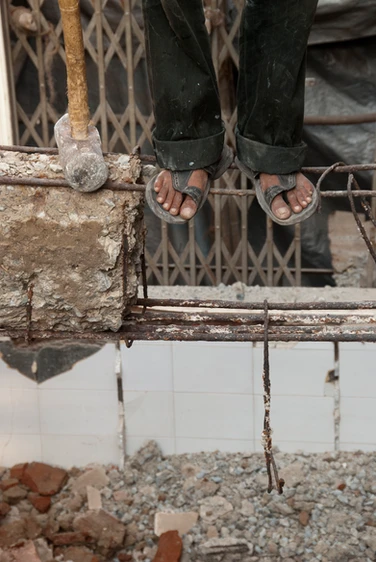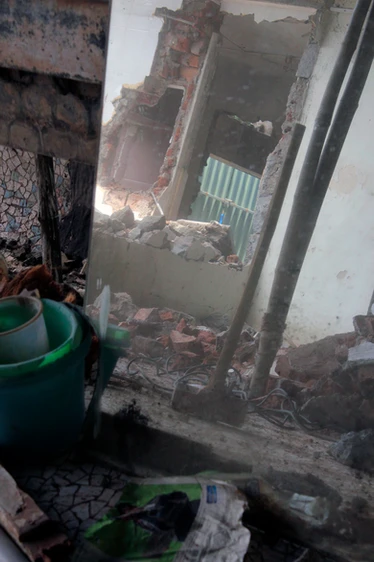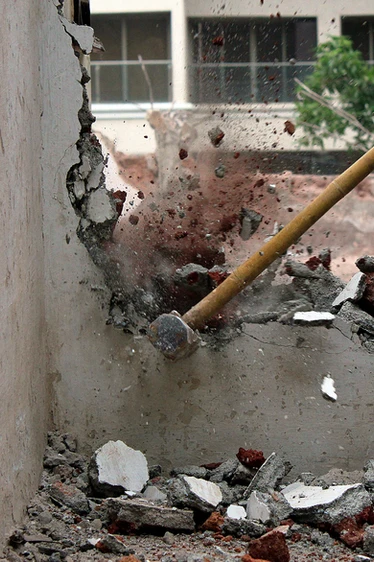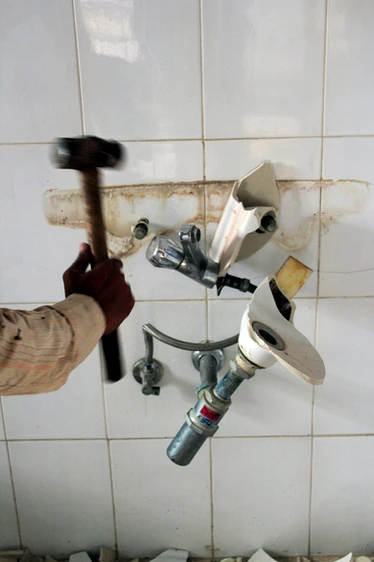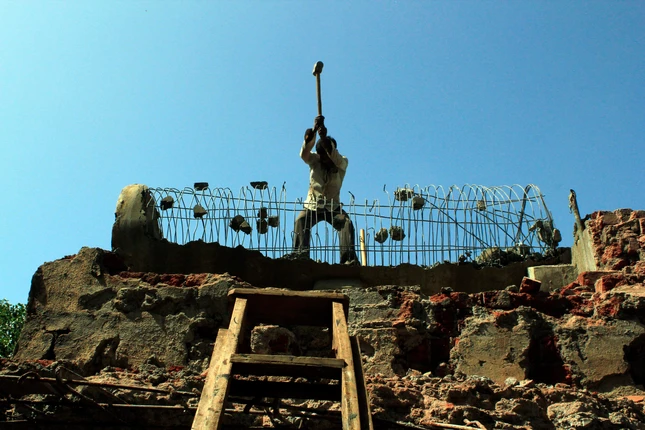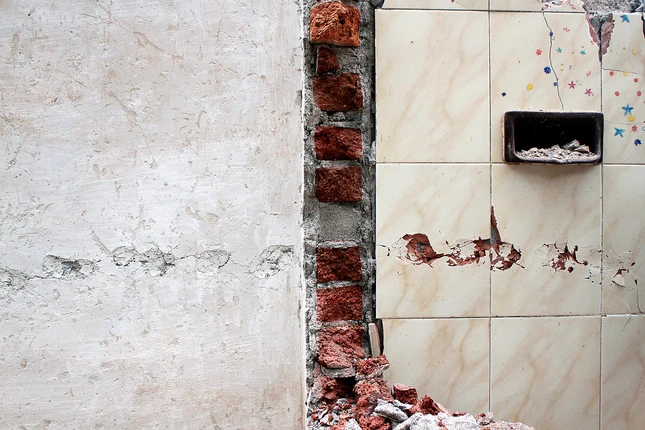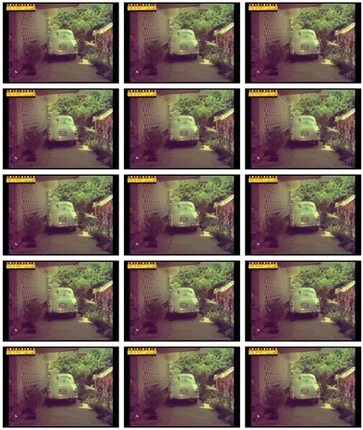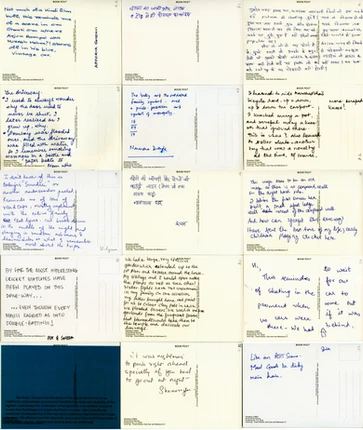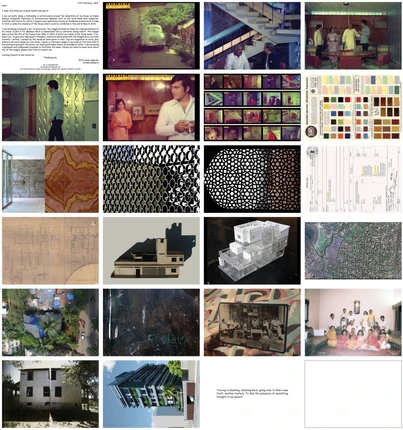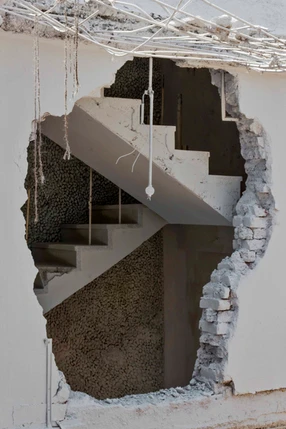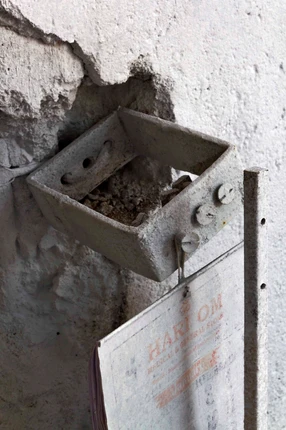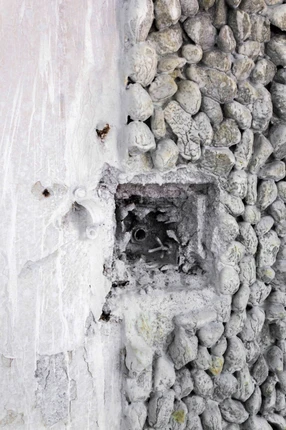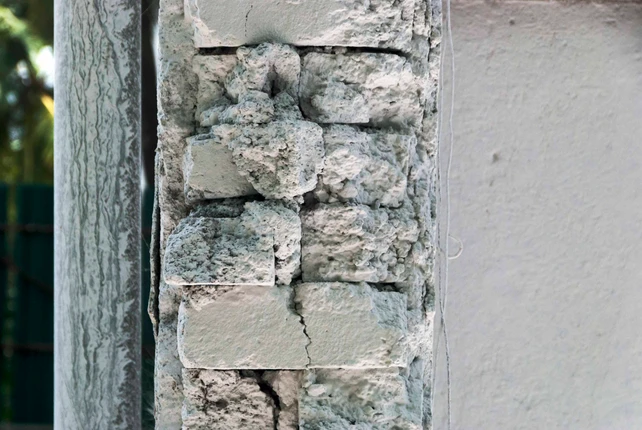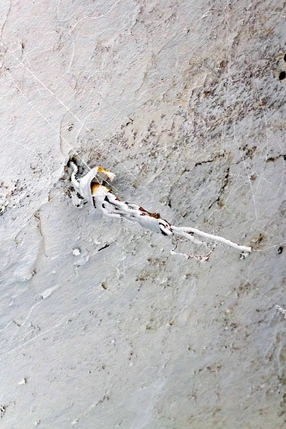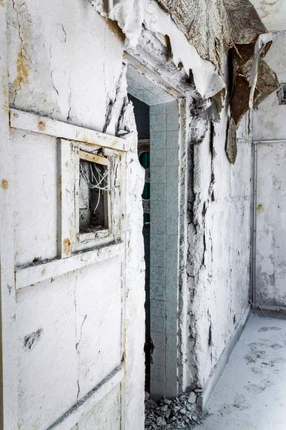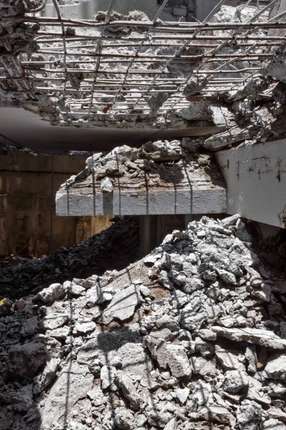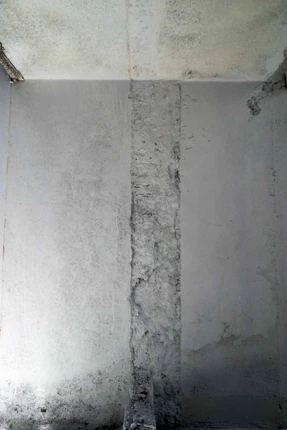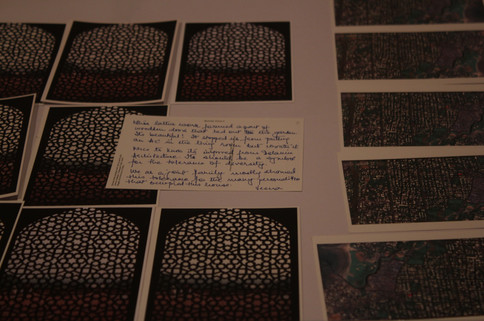Traces & Aura @ K/73
- info584651
- May 17, 2013
- 6 min read
Updated: Feb 9
Fellowship at K R V I A
2012 - 2013
A-Z Booklet
DEMOLITION PROJECT
A5 Booklet
Arranged alphabetically from A-Z, the booklet notes writings and ideas that seem relevant to the demolition project. Work done is incorporated within the appropriate theme. The structure of the booklet allows for continual growth and change.
B - Brick
HOUSE FRAGMENT SAMPLES
35mm slides viewed through slide viewer
Recognisable fragments of the house were collected after demolition. Samples were photographed in daylight against a neutral grey background with a centimeter / millimeter scale bar in the image and archived (as archaeological specimens). The gesture of photography is the search for a standpoint, for a world view: it is an ideological gesture. – Vilem Flusser ‘It is about reading the textures in the remnant medians as the structural and social force that holds disparate elements together; suggesting a certain archaeological quality to the work, where one can view the layers of materiality - tiles, plaster, paint, wallpaper etc as historical strata of excavations. It gives insight into how places hold and conceal and the moment of destruction reveals a greater history of complex socio-cultural, psychological and physically embodied meanings.’ They are not meant to be ‘historic documents’ alone per se but may be seen as ‘aesthetic objects’ aswell.
E - Entropy
The future is but the obsolete in reverse - Nabokov The two videos gradually ‘dissolve’ over a duration of 3mins alternating between demolition and construction, breaking and baking of bricks. Each seems to be emerging from the other and leaving its traces too within the other, where construction is also progressive destruction and vice versa. The process will endlessly continue till the video eventually disintegrates itself – ENTROPY. Video 01: The camera frames the debris falling in a room. The foreground is a pile of debris (acrid brick and memories) while in the background is a staircase. The house dematerialises into itself. The falling debris creates dust clouds which hide the scene. Video 02: The camera focuses on a face of a burning brick kiln. The smoke clouds that emerge hide the brick layers. The dust and smoke clouds engulf the entire frame time and again. When the cloud lifts, the process reappears.
DUST AND SMOKE
Video, 8min 20 sec in loop
H - Hammer
This is part of a body of work that explores the ‘Traces & Aura’ of my own house through its demolition space-time. The project gives insight into how the moment of destruction reveals a greater history of complex socio-cultural, psychological and physically embodied meanings. The trace is appearance of nearness, however far removed the thing that left it behind may be. The aura is appearance of a distance; however close the thing that calls it forth. In the trace we gain possession of the thing; in the aura, it takes possession of us.” Benjamin thinks about ruins as ‘petrified life’ visibly bearing ‘marks and wounds of the history of human violence’. The hammer (a ready-to-hand tool) which destroys my house also damages my body insofar as the house was already an indication of my body. As the hammer smashes the house and its elements, it can never smash it in the same way again. The relation of value and significance of that blow is seen as the aesthetic moment - the collapse of subject-object and time-space-place in spatial unmaking. The break is an opening, an inbetween-ness of becoming.
Text by with Santosh Thorat
M - Memory
MEMORY POSTCARDS
Installation
A set of 21 postcards along with a quote were sent out to nearly 70-80 people ranging from family, friends, previous residents, neighbours, domestic help, architects, academicians. The images on the front of the postcards are representations of the house. Recipients were requested to write their memories or thoughts based on the image as trigger, with the hope that each individual’s perception of the house differs depending on the depth of his/ her engagement with it. Personal memory in its traditional sense is by definition cut off, hybrid, displaced, split. Exhibited here is fifteen of each image-text from the 45 sets received. Images compel the imagination because they remain radically open-ended. In retrieving loose succession of fragmentary glimpses of the past, the viewer is flung into a condition of imaginary, temporal and spatial mobility. These images call for participation; they organise affect, desire etc. As Franco Berardi says, what is interesting is not image as a representation of reality, but its dynamic power, its ability to stir up and build projections, interactions and narrative frames structuring reality, its ability to select among infinite possible experiences, so that imagination becomes image in action. Images are the basic political dispositive today - an interpretative and narrative dispositive for constructing new realities. Essentially, memory is a fixation usually accompanied by the projectile capacities of the imaginary, whose very possibility requires forgetting. Paul Virilio
The postcards (as image and text) make one re-think the notion of history and time as inherently flowing and sequential. Postcards become memory traces in part of the construction of the absent subject through silences and their replacements within the present. The absence of a sign is always the sign of an absence. ‘It explores different notions of pastness, showing that the past and present are not sequential that some pasts live in the present. People suppress some stories and reveal others and ‘remembering forgetfully’ is part of imagining their futures.’ The work has a distinct front and back; a grid of repetitive images in a grid in front and a diverse text-ure on the flipside. The analogy between excavation and search of memory is used to display the installation. Being participatory, it allows for constant change.
M - [Mid-Century] Modernism
MODERNISM CASTING A LONG SHADOW
4-Channel video of projection on chipboard model, 3sec in loop
The repeated action of hammering on the 4 faces reveals the potential of the hammer.
The desire for the new to drive out all shadows.
T - Trace
TRACE
Video of projection on pop cast of model, 1m45s
The house was measured and drawn to make a chipboard model at 1:100 scale. Plaster of Paris was cast into the model and the external walls of chipboard were taken off to encapsulate the space within. Video of workers breaking a rectangular piece of the actual external wall was projected onto this negative pop cast of model. A line of weakness in the form of an imaginary rectangle is created by hammering along successive points shifting between the external wall, the cast space in model and its shadow. A crowbar is used to force apart the wall marked and direct it to ground. The solid white ‘model space’, mutates for several moments into a drawing like representation, revealing the immediate landscape beyond - a tree with green leaves fluttering in the breeze. The shadow persists throughout preserving a trace of the temporarily deleted structure.
V - Void [Absence]
‘The act of demolition creates spatial conditions that radically alter the perception of the building (and its surrounding environment), creating a sense of physical, visual and social instability resulting in the shift of everyday experience into extraordinary visual and kinetic confrontations.’
SPATIAL PERCEPTION
Video Loop, 6m20s
W-Whitewash
WHITEWASH
Photographic prints, 16” x 24”
"Without the Law of Ripolin we accumulate; turning our mind into a concierge or custodian. For instead of leaving our mind free to explore the vast continent before us, we confine it in manacles, in the traps, dungeons and ditches of memory“.
Le Corbusier The Law of Ripolin,
A Coat of Whitewash becomes the cleansing agent capable of erasing all traces of history and tradition from architecture - a moral act of self-renewal.Simple act of colouring brings about a dislocation where the deeply-rooted bond between house-dwelling-inhabitant is consciously broken. Any trace of domesticity and any ravages of time are totally absent or white-washed. The house is photographed as objects to be looked at, inhabited by a viewer who is detached from it, like a visitor. One enters the house only to pass through it in order to come out of it again, untouched by any notions of domesticity. … has Been Killed … erased overnight. The paint signifies the end of all hope. It’s a perfect symbol for the corporate whitewashing Painting white is like a gag before an execution.
Traces & Aura @ K/73
Exhibition at K R V I A







